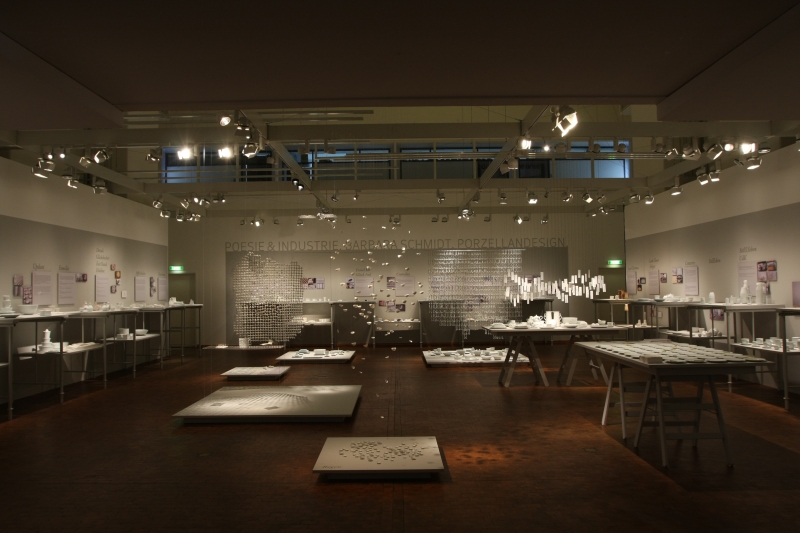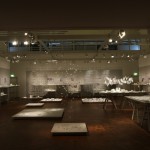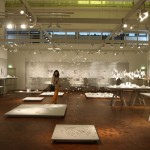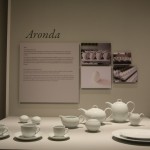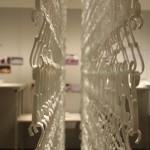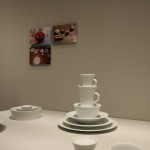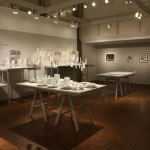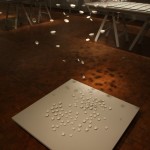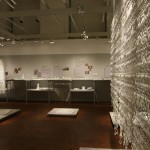Bauhaus Archiv Berlin: Poesie & Industrie. Barbara Schmidt. Porzellandesign.
In our post “Wilhelm Wagenfeld Reviews Design for Use, USA” we quoted Wagenfeld’s assertion that “In the current age machines and handicraft are intimately interwoven with one another.”
The Bauhaus Archiv Berlin is currently presenting an exhibition which ably demonstrates that some 80 years later such harmonious constellations cannot only still be found, but are still producing results every bit as refined and timeless as those realised by Wilhelm Wagenfeld.
Poesie & Industrie – Poetry and Industry – is the first in-depth retrospective of the work of the Berlin based porcelain designer Barbara Schmidt.
And we find retrospective the correct phrase. Even if the connotations implied don’t fit so smoothly…..
Following completion of her studies at Burg Giebichenstein Halle in 1991 Barbara Schmidt began cooperating with the long established Thüringen porcelain manufacturer Kahla, where, in the wake of the company’s 1993 insolvency and 1994 new formation, she was to play a pivotal role in defining and driving the company’s collection and fortunes.
During her time at Burg Giebichenstein Barbara Schmidt not only learned the basics of porcelain design, but also analysed the state and nature of the porcelain industry, coming to the conclusion that it was an industry losing its way, “In a time when industry is making every effort to anticipate needs before the potential users feel them, an asynchronicity developed between the products of the porcelain industry and the interests of their potential customers. The porcelain that was produced became less and less popular and the users’ changed needs were not recognised by the producers” 1.
Under Barbara Schmidt’s guidance Kahla Porcelain began responding to these changed needs. And the porcelain became increasingly popular.
At the risk of trivialisation and generalisation, Barbara Schmidt’s principle innovation was to move away from traditional concepts of what household porcelain must and should do and instead to create porcelain families that responded to changing circumstances, changing domestic and demographic reality.
It no doubt helped that Barbara Schmidt achieved this transformation with a highly accessible form language that is as subtle and familiar as it distinctive.
Poesie & Industrie provides not only a wonderful introduction to the nature and significance of this work, but also details the development of Barbara Schmidt’s philosophy over the past two decades. Developments largely influenced by changing circumstances, changing domestic and demographic reality.
And of course the new possibilities offered by modern mechanical production methods.
Barbara Schmidt is however much more than Kahla and Poesie & Industrie also includes numerous examples of projects created independently of Kahla, projects which help round and complete the image of a porcelain designer for whom porcelain design is more than just perfecting the curve of a handle or the profile of a plate. And porcelain production more than sitting at a potter’s wheel with grubby hands.
In addition to the porcelain Poesie & Industrie. Barbara Schmidt. Porzellandesign also features photos inspired by Barbara Schmidt’s work taken by five contemporary photographers, including Helsinki based Benjamin Rinner – who is also responsible for the “static” USM Haller photos to be found in the (smow) online shop.
Poesie & Industrie. Barbara Schmidt. Porzellandesign. can be viewed at the Bauhaus Archiv Berlin until Monday November 4th 2013.
Full details, including information on the accompanying fringe programme can be found at http://bauhaus.de
1. Barbara Schmidt “Portfolio”, quoted in Jäschke, Kirsten “From Personal to Universal. Reflections on the creative cosmos of Barbara Schmidt” in “Poesie & Industrie. Barbara Schmidt. Porzellandesign.”, Bauhaus Archiv / Museum für Gestaltung Berlin, 2013.
- Bauhaus Archiv Berlin: Poesie und Industrie. Barbara Schmidt. Porzellandesign.
- Bauhaus Archiv Berlin: Poesie und Industrie. Barbara Schmidt. Porzellandesign.
- Bauhaus Archiv Berlin: Poesie und Industrie. Barbara Schmidt. Porzellandesign.
- Aronda by Barbara Schmidt. As seen at Poesie und Industrie, Bauhaus Archiv Berlin
- Bauhaus Archiv Berlin Poesie und Industrie Barbara Schmidt Porzellandesign
- Update by Barbara Schmidt. As seen at Poesie und Industrie, Bauhaus Archiv Berlin
- Bauhaus Archiv Berlin: Poesie und Industrie. Barbara Schmidt. Porzellandesign.
- Regen by Barbara Schmidt. As seen at Poesie und Industrie, Bauhaus Archiv Berlin
- Bauhaus Archiv Berlin: Poesie und Industrie. Barbara Schmidt. Porzellandesign.
Tagged with: Barbara Schmidt, Bauhaus Archiv Berlin, Kahla Porcelain
